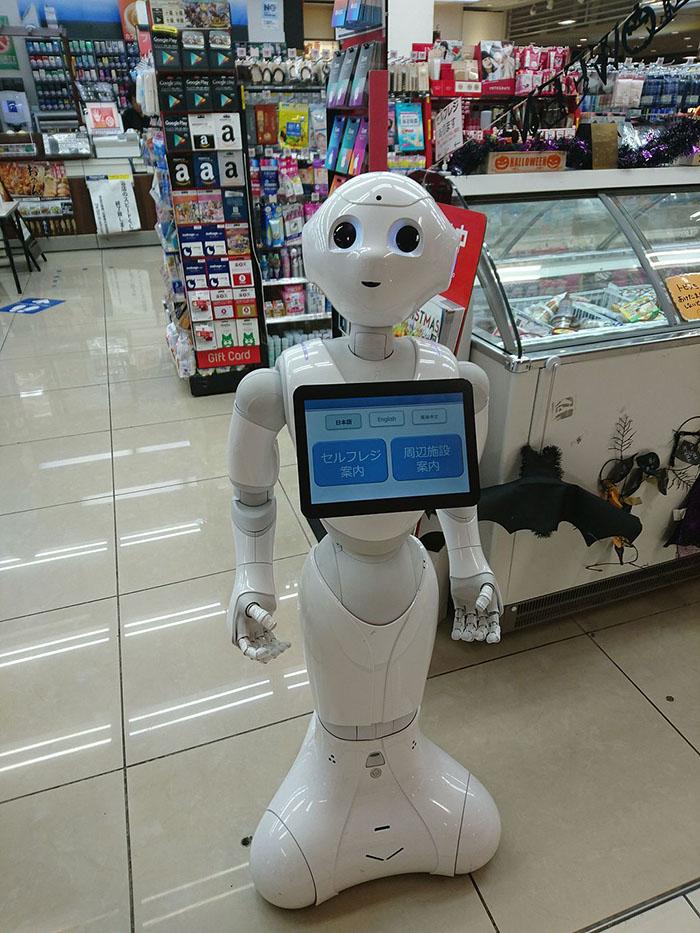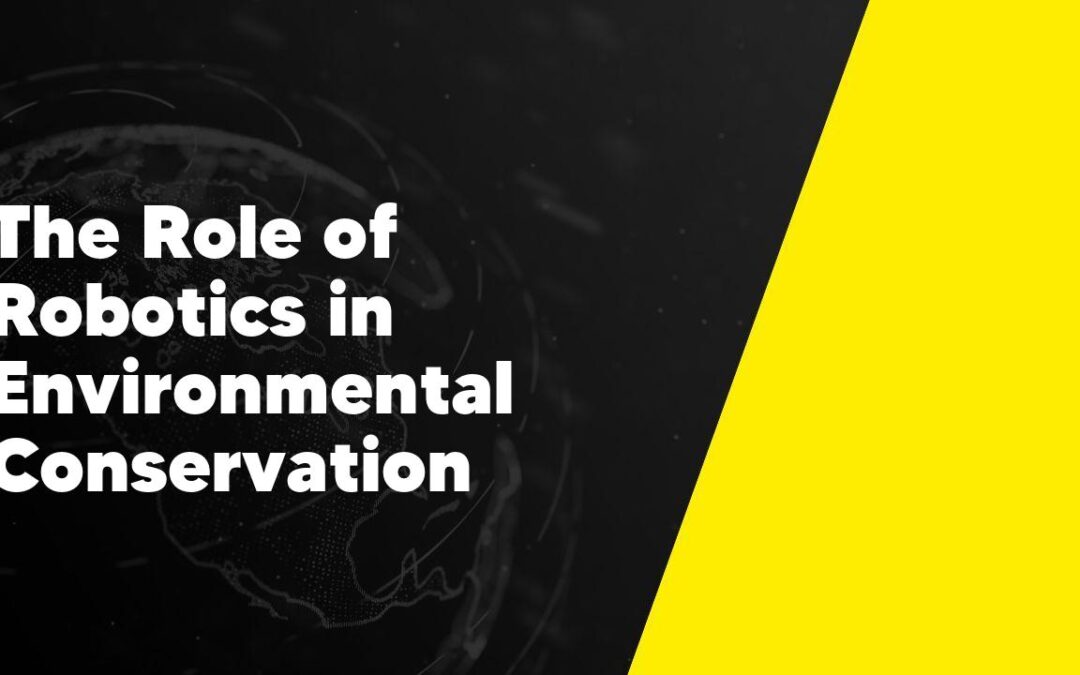Robotics plays a critical role in environmental conservation as it offers innovative solutions for various challenges that arise in the field. From monitoring and data collection to mitigation of pollution and habitat restoration, robots are being employed to effectively address environmental issues. This article explores the diverse applications of robotics in environmental conservation and highlights the significant impact they have in preserving and protecting our planet.
1. The Growing Need for Robotics in Environmental Conservation
As someone who is passionate about environmental conservation, I believe that there is a growing need for robotics in this field. With the increasing threats to our planet such as deforestation, climate change, and pollution, traditional methods of conservation are no longer enough. Robotics can play a crucial role in addressing these challenges by providing innovative solutions. For example, drones equipped with cameras can help monitor and protect endangered species in remote and inaccessible areas. Autonomous robots can be employed to clean up ocean pollution or safely remove hazardous waste. By leveraging the capabilities of robotics, we can enhance our efforts in environmental conservation and ensure a sustainable future for generations to come.
2. Advancements in Robotics Technology: Revolutionizing Environmental Conservation

Robotic technology has made significant advancements in recent years, revolutionizing various industries, including environmental conservation. As someone who has always been passionate about preserving the environment, I am thrilled to see the positive impact that robots are having on conservation efforts. These technological marvels have the ability to perform tasks that were once manual and time-consuming, such as monitoring wildlife and collecting data on plant species. With their precision and efficiency, robots can navigate challenging terrains and collect information that is crucial for understanding and protecting our planet’s biodiversity. Additionally, robots can also assist in tasks like cleaning up polluted areas and removing invasive species, further contributing to the preservation of ecosystems. With the continued advancements in robotics technology, I am excited about the potential for even greater strides to be made in environmental conservation.
3. How Robotics is Assisting Wildlife Preservation Efforts
In my opinion, the use of robotics in wildlife preservation efforts is a game-changer. These technological advancements are revolutionizing the way we approach conservation activities. Robots are now being deployed to monitor wildlife populations, track animal behaviors, and collect vital data without causing disruption or harm to the animals themselves. With their ability to navigate difficult terrains and inaccessible areas, robots are becoming invaluable tools to study and protect endangered species. They provide researchers with a wealth of information, helping us better understand animal behavior patterns and ultimately develop effective conservation strategies. This integration of robotics into wildlife preservation efforts brings hope for the future of our planet’s biodiversity.
4. Robotics in Marine Conservation: Protecting Our Oceans
As a marine biologist and advocate for ocean conservation, I am enthralled by the potential that robotics holds in protecting our precious marine ecosystems. These advanced and intelligent machines have the ability to explore the depths of the ocean, gather data, and even assist in the removal of marine debris. From remotely operated vehicles (ROVs) that can capture high-resolution images of coral reefs to autonomous underwater vehicles (AUVs) that can survey vast areas of the ocean floor, robotics has revolutionized the way we understand and protect our oceans. With their ability to access areas that are difficult for humans to reach, these robots play a vital role in monitoring and preserving fragile marine ecosystems, contributing to the sustainability of our oceans for future generations.
5. Robotic Tools for Sustainable Agriculture and Land Management
Agriculture and land management have always been important for sustaining our food production and protecting our environment. As a woman in the field, I am thrilled to see the advancements in robotic tools that can revolutionize the way we approach these practices. These innovative machines have the potential to increase efficiency and productivity, reduce labor costs, and minimize environmental impact. With the help of robots, we can streamline tasks such as planting, watering, and pest control, ensuring that we use our resources wisely. Moreover, these robots can collect data on soil health and crop conditions, providing valuable insights for precision farming. By embracing robotic tools, we can not only improve the sustainability of our agriculture and land management but also create a more inclusive and diverse industry.
6. The Future of Environmental Conservation: Harnessing the Power of Robotics
In my opinion, the future of environmental conservation lies in harnessing the power of robotics. With technology advancing at an unprecedented rate, we now have the capability to create robotic systems that can greatly contribute to the protection and restoration of our natural environment. These robots can be programmed to perform tasks such as monitoring wildlife populations, identifying and removing invasive species, and even assisting in reforestation efforts. By utilizing robots, we can gather data more efficiently, reduce human error, and minimize the risks associated with dangerous or remote environments. Additionally, robotic systems have the potential to be powered by clean and renewable energy sources, further reducing their environmental impact. The combination of technology and environmental conservation holds immense potential for a sustainable future.
Conclusion
In conclusion, robotics plays a significant role in environmental conservation by providing innovative solutions to various challenges. From monitoring wildlife populations to cleaning up polluted areas, robotic technology has the potential to greatly contribute to preserving our planet. As technology continues to advance, it is vital that we continue to explore and harness the power of robotics in order to achieve sustainable development and a greener future.
What is the role of robotics in environmental conservation?
Robotics plays a crucial role in environmental conservation by assisting in tasks such as data collection, monitoring, and waste management. They can be used to gather information about the environment, monitor the health of ecosystems, and clean up pollution.
How do robots help in data collection for environmental conservation?
Robots equipped with various sensors can be used to collect vast amounts of data about the environment. They can measure air and water quality, map landscapes, and track wildlife movement patterns. This data is invaluable for scientists and researchers in understanding and preserving ecosystems.
What are the advantages of using robots in environmental monitoring?
Robots can work in hazardous or inaccessible environments, which makes them ideal for monitoring purposes. They do not get tired or require breaks like humans, and they can withstand extreme conditions. This makes it possible for them to collect continuous and accurate data over long periods of time.
How can robotics be used in waste management for environmental conservation?
Robots can aid in waste sorting and recycling processes, making them more efficient and effective. They can also be utilized in the cleanup of hazardous waste sites, reducing human exposure to dangerous substances. By automating these tasks, robotics can help minimize the impact of waste on the environment.
What challenges are associated with the use of robots in environmental conservation?
Some challenges include the high cost of robotic systems, the need for specialized training to operate and maintain them, and the potential for technological limitations. Additionally, ethical concerns may arise regarding the reliance on robots over human labor in certain conservation efforts.
What is the future potential of robotics in environmental conservation?
The future potential of robotics in environmental conservation is vast. Continued advancements in robotics technology, such as improved sensors and artificial intelligence, will enhance their capabilities in data collection, monitoring, and intervention. Robotics can become a powerful tool for preserving and restoring the natural environment.

